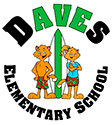Kindergarten
KINDERGARTEN
LANGUAGE ARTS
LANGUAGE ARTS
As teachers, we want to children to experience the joy of reading. Consider what children have to learn before they begin to read: Phonetic Awareness:
- Identify and produce rhyming words in response to spoken words
- Identify beginning and ending sounds
- Track auditorially each word in a sentence
- Demonstrate letter sound correspondence
- Distinguish between a letter and a word
- Learn new words from listening, reading, and writing
- Build simple words
Reading Strategies:
- Retell familiar stories
- Sequence a simple story
- Identify beginning, middle, and end of a story
- Identify characters and setting of a story
- Use pictures and context to make predictions about story content
- Discuss a story and remain on topic in the discussion
Directionality:
- Left to right page sequence
- Left to right in sentence
- Return sweep
- Top to bottom
- Beginning of book & end of book
Book Concepts:
- Cover of book, title page, & front and back
Writing:
- Write name
- Write and use letters. Phonically spelled words, and pictures to communicate their own ideas
- Participate in interactive drawing and writing
- Write using a left to right progression
- Identify upper and lower case letters
- Identify punctuation: (?), (.), (,), (" ")
Listening and Speaking:
- Listen to others and know when to respond
- Understand and follow one and two step oral directions
- Share information, opinions, and questions, speaking audibly in coherent, complete sentences
- Recite short poems, rhymes, and songs
MATHEMATICS
We want children to develop an understanding and insight into the patterns of mathematics through the use of concrete materials. To this end we base our curriculum on the state adopted Mathland program.
Number Sense:
- Write and name numbers 1 - 20
- Arrange number in sequence to 20
- Count using 1 to 1 correspondence to 20
- Understand concept of numbers through 10
- Solve basic word problems
- Compare 2 or more sets
Measurements and Geometry:
- Name simple shapes: squares, circles, triangles, parallelograms, rectangles, and diamonds
- Use correct vocabulary when describing or comparing objects: big-little, short-tall, alike-different,
- Demonstrate general understanding of time: morning, night, yesterday, today, tomorrow, week, year, days of the week
Algebra and Functions:
- Recognize a pattern, extends of a pattern and create a pattern
- Sort and classify objects
Statistics and Probability:
- Collect information and record results using objects, pictures, and picture graphs
Problem Solving and Reasoning:
- Solve word problems appropriate to grade level
SOCIAL STUDIES
Social Studies is approached in a varied number of ways. Our new literature series approaches and enriches the concepts stressed at this grade level.
Around the Neighborhood:
- The community
Family and Friends:
- Social skills
- Getting along with others
- Celebrations
Different Cultures:
- Celebrations
SCIENCE
Our goal in the science program is to develop ecologically aware students who have an appreciation and enjoyment of science through:
- Knowledge of the scientific process
- Integration of science with other curricular areas
- Common scientific vocabulary
- Common core of knowledge
- Hands on approach to scientific discovery
- Application of science and technology
- Knowledge and respect for hazardous materials
Physical:
- The five senses
Earth:
- Weather
Life:
- Matter - living and non-living
MUSIC AND ART
During the year singing, music appreciation, classroom instruments, and rhythmic movement are part of the program along with a variety of art and craft experiences.
PHYSICAL EDUCATION
Each child develops large and small muscles, balance, and coordination through body movement activities.
- Basic motor skills
- Rhythm and dance
- Game skills
- Sportsmanship
ADDITIONAL PROGRAMS
Your child will have an opportunity to participate in several special programs, including:
- Computer Literacy (Integrated into the curriculum)
- Library
- Art Docents
